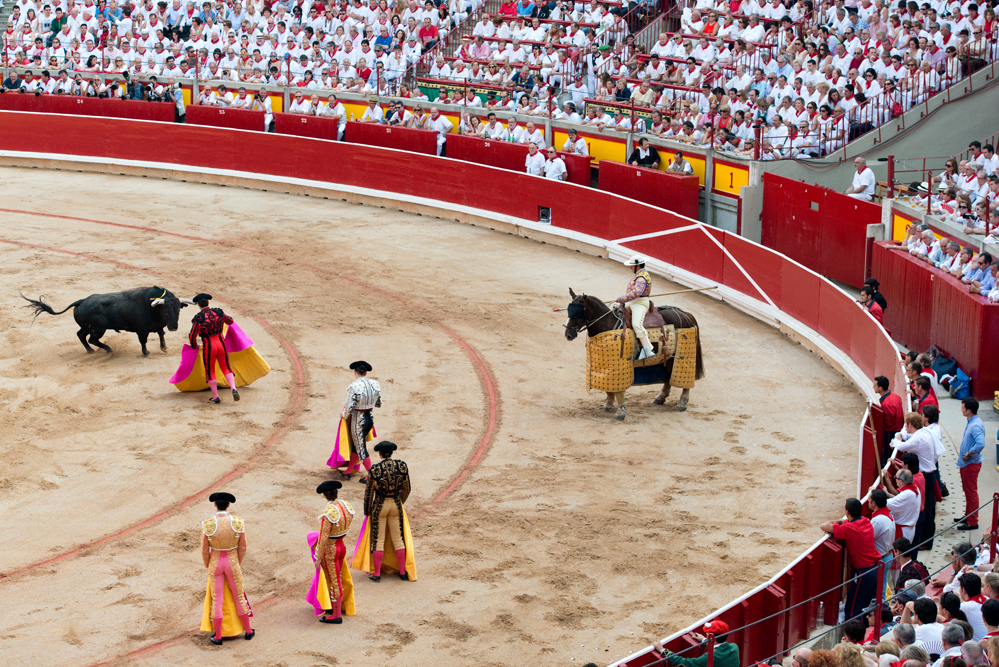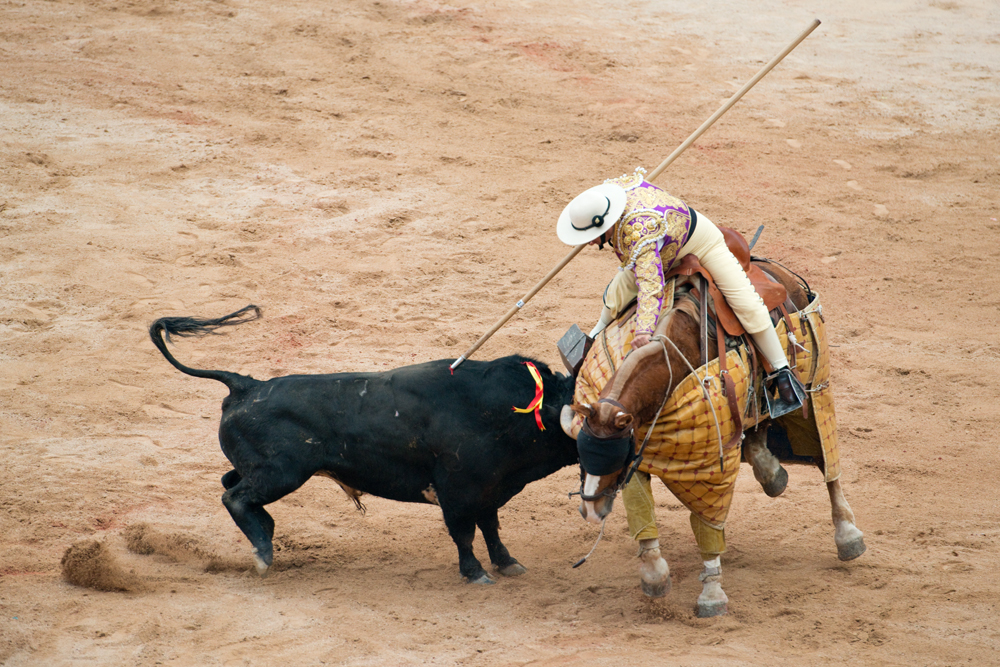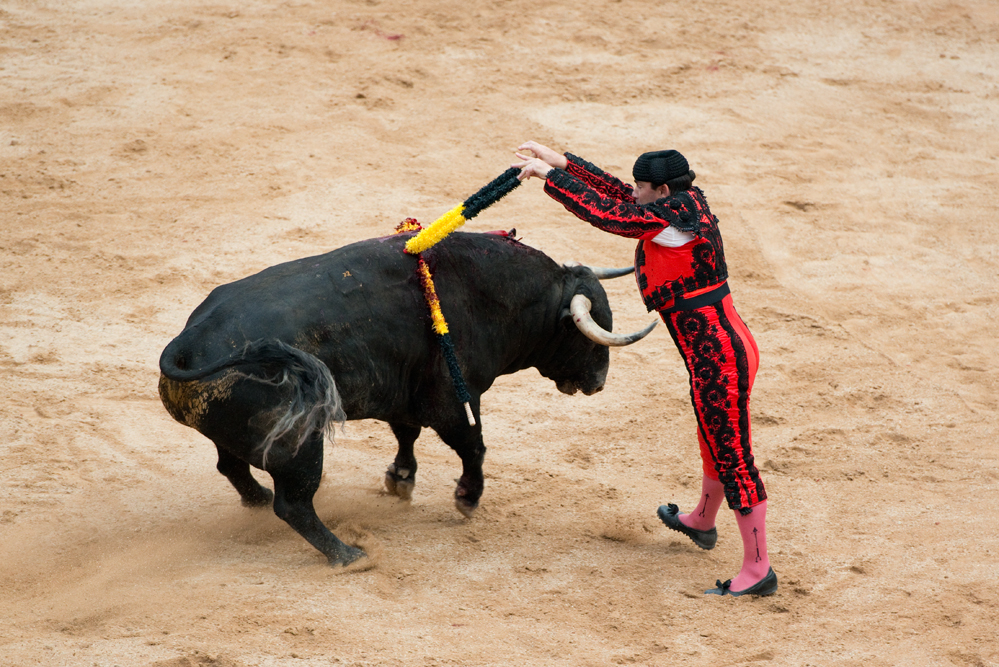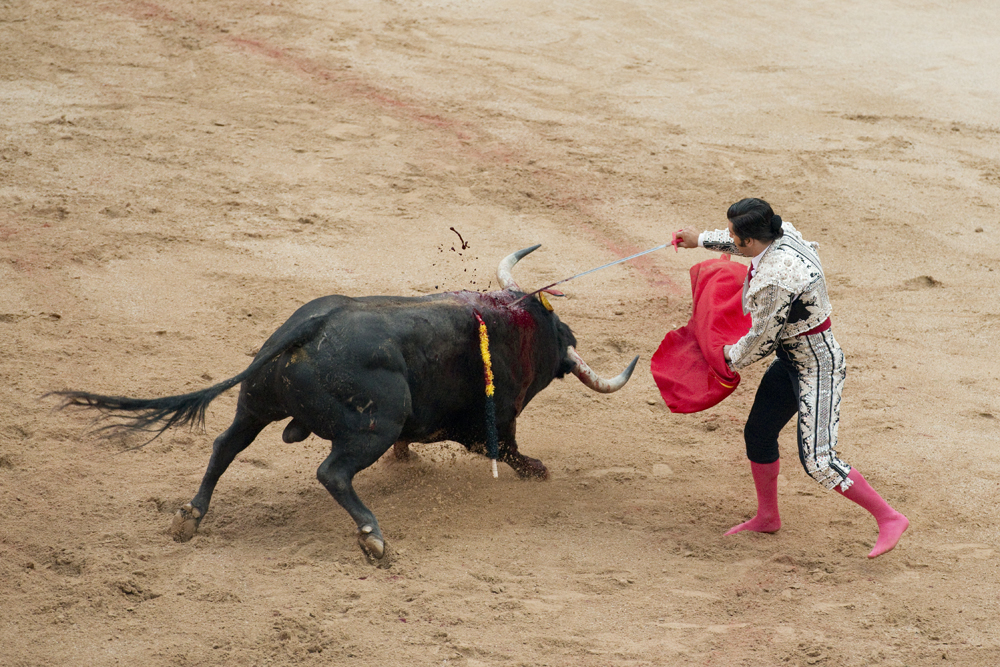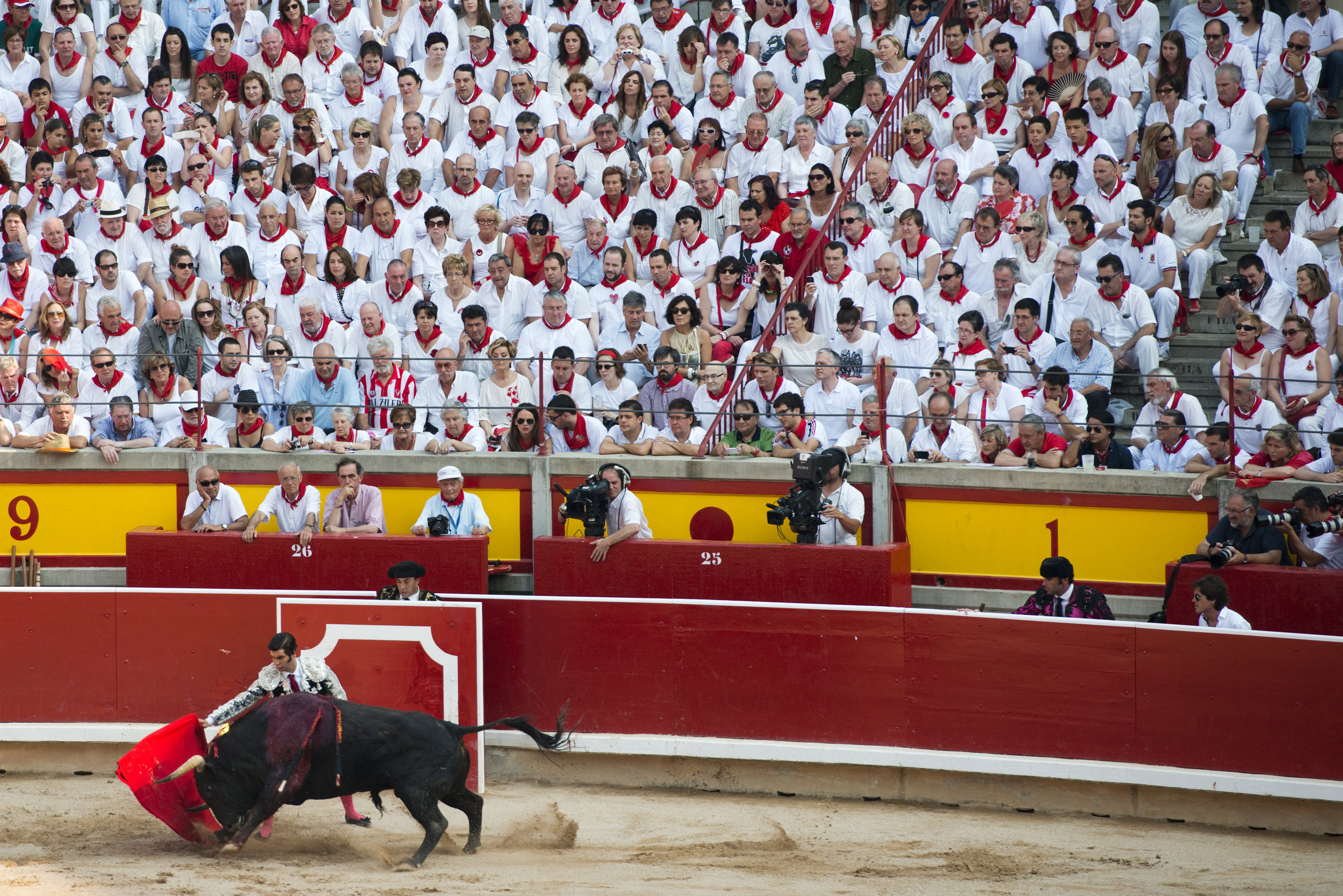What better Euro-Trip grand finale is there than to experience the Pamplona festivities of San Fermin? I decided on going about a month prior and it was almost impossible to find accommodations. I found a hostel that could take me for 3 days, but unfortunately was a day after it started. I would have loved to photograph the opening celebrations, but ah well. It seems that many other people suffered the same fate; when I arrived at the very tiny train station, it was mass confusion as hoards of tourists began hunting down taxis. Pamplona goes from a population of 200,000 to 1,000,000 for the week of San Fermin. When I made it to the hostel, they offered me a festival outfit package if I didn't already have the proper attire: a white shirt, white pants, red handkerchief, and red sash.
"Oh, I'm pretty much here just to photograph."
"Believe me, you're going to need it. Even the photographers wear the clothes."
Oh, really now. Still not entirely convinced, I went ahead and took the package anyways... Which I'm so glad I did. Maybe about 10% of people were not wearing the outfit and stuck out like sore thumbs. Even though I wasn't partying like the rest of the revelers, I still felt part of the experience, which made it that much better just being there to document. It was amusing seeing the "sexy" variations of the clothes worn by young women, like white booty shorts instead of pants, or red bras underneath sheer white tank tops. I think the one uniting factor for everyone was the red handkerchief tied around the neck. It seemed like the most important aspect of a San Fermin outfit. On the last night there is a solemn midnight ceremony called "Pobre de Mi" where candles are lit and the handkerchiefs are removed.
BULL RUN, DAY I
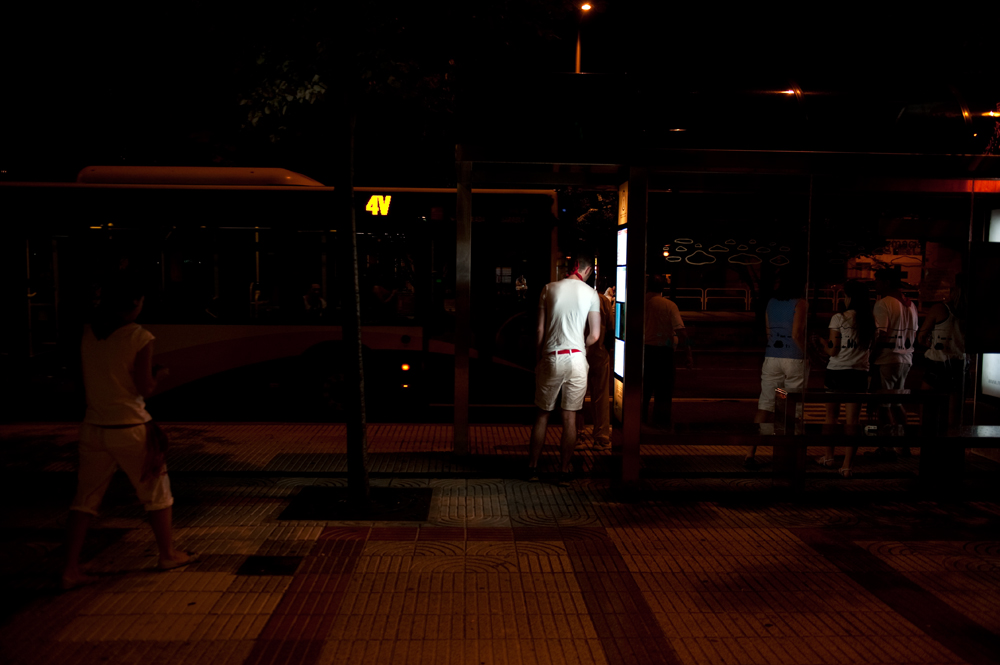

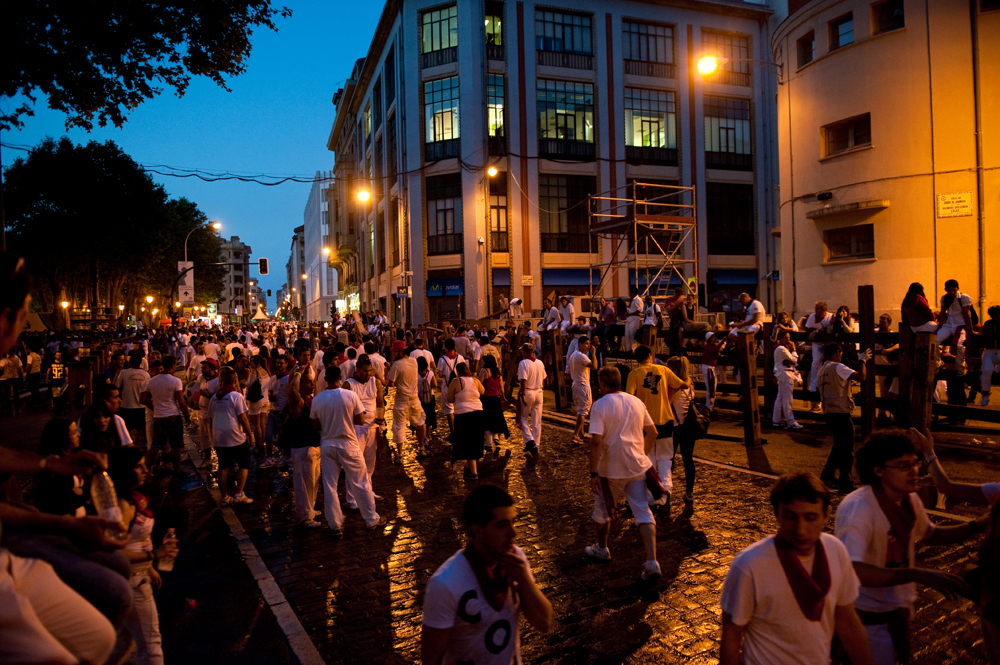

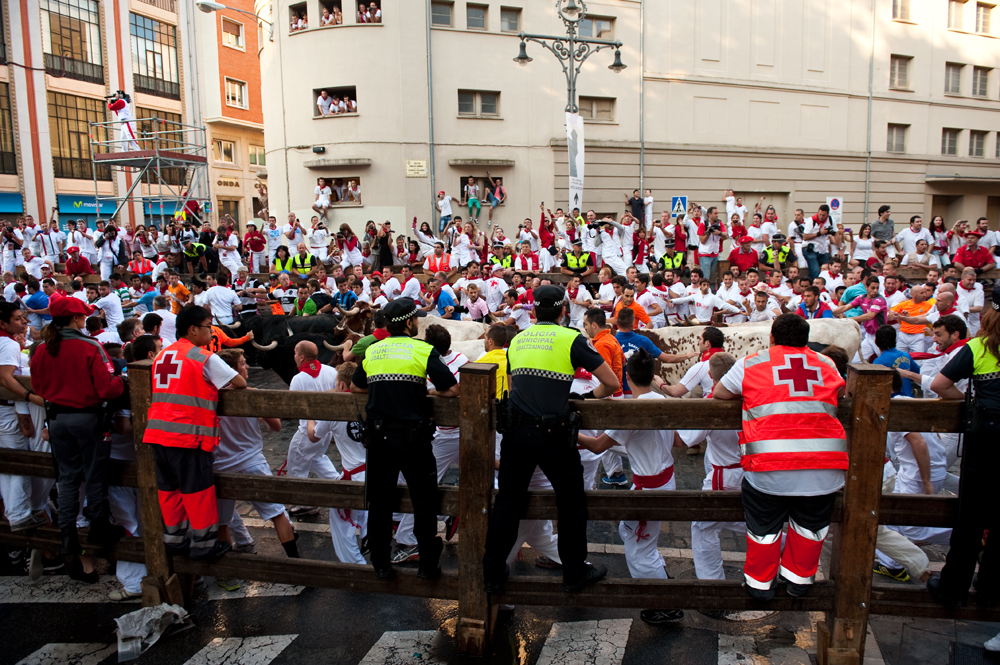
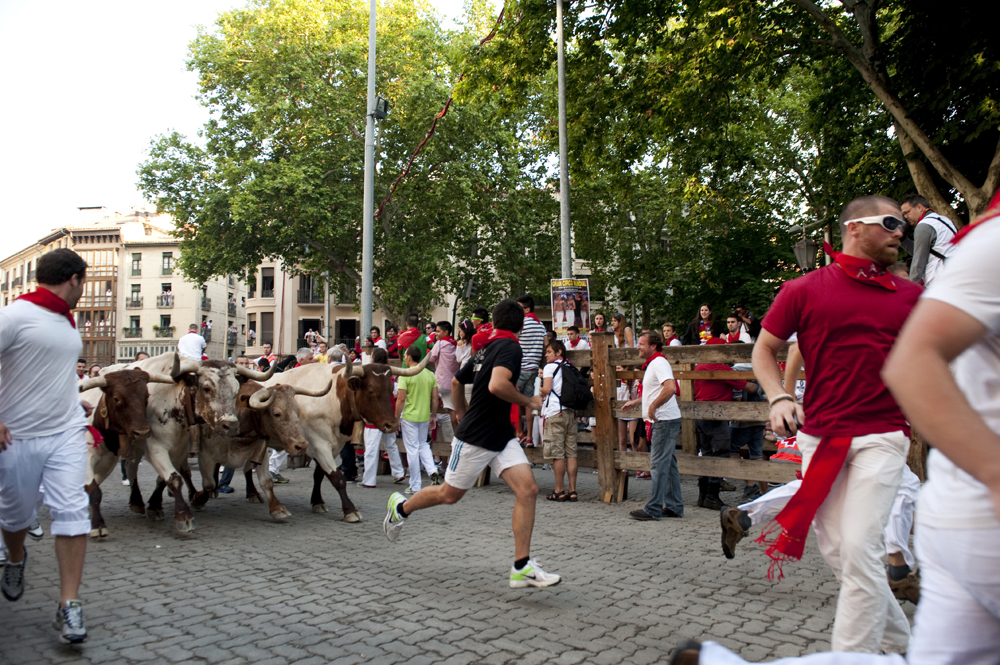
The daily celebrations begin each morning with the infamous running of the bulls, the encierro, starting at 8 AM. I arose at 5 to make sure I could find my way down to the town square and locate a good spot somewhere along the streets. I barely caught a wink of sleep because of the heat during the night, fiercely missing my air-conditioned hotel room in Madrid. Around the hours of 4 to 9 AM it finally cools off and feels glorious, and was a blessing for watching the bull run.
Well, of course people stay up partying all night long, so the streets are filled with drunken revelers that have already claimed their fence spots. The only other option of viewing the race, which many people find much more favorable, are balconies that overlook the streets. These must be reserved months in advance and cost quite a bit of money.
I met some Ecuadorians who saw my camera and invited me to sit with them on the front fence. It was also their first day. We were unaware that the front fence is reserved for press, police, and medics, so we scrambled to get another spot when were told to get off about 30 minutes prior to the run.
When the group ran by, we jumped off and made our way into the street to see the runners and the bulls inside Plaza de Toros. Don't ask me why the police didn't say anything to us, but apparently the race wasn't quite over. So many people participate nowadays that the run is divided into two sections. We suddenly saw more runners flying by, heard the pound of hooves, and before we knew it, more bulls came barreling down the cobblestone street. It was a very surreal moment as they passed by just feet away.
We continued our way into the Plaza de Toros, where participants are funneled in and run around with a single bull if they so choose. The runners, still intoxicated (most of them anyways), think it's great fun scurrying around and agitating the frightened bull, who is also subjected to the screams of belligerent people by the hundreds. I was pulled into the frenzy by the Ecuadorians at one of the entrances... Quite literally pulled. It was like being at a concert. As I was squeezing by, my pockets were quickly felt up and rooted through. This is why putting your money into shoes, preferably boots, is ideal. I was told that thieves from all over Spain come to Pamplona for the amazing pickpocketing opportunities during San Fermin.

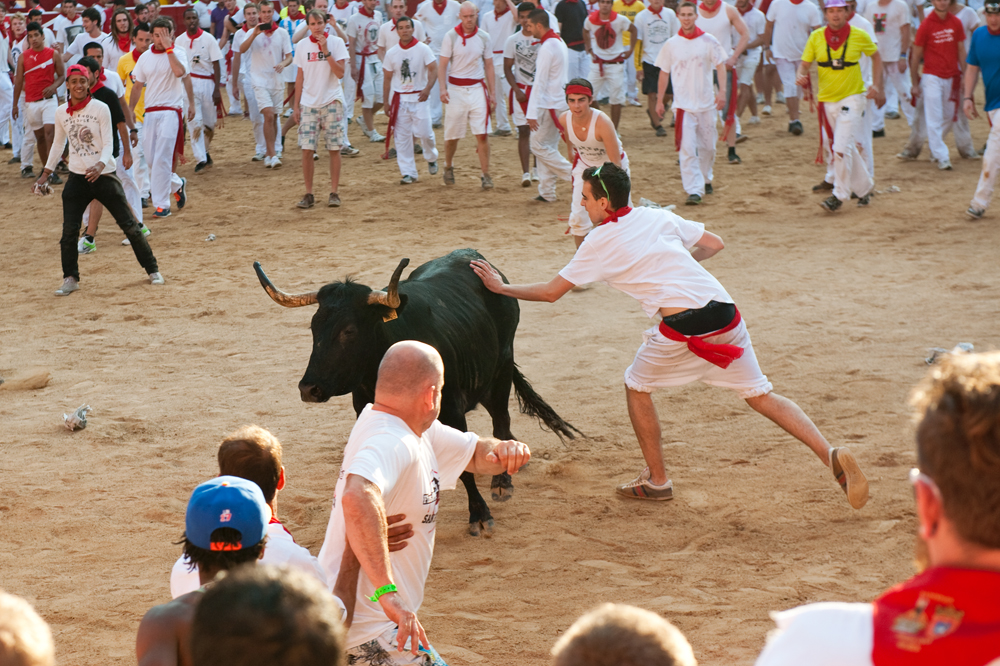

BULL RUN, DAY 2
The second morning, I went out in hopes of finding a spot that was situated closer to the front fence and on a curve so I could get a better view of the action as it came towards me. I found a decent place and quickly claimed it, defending my position until 8 AM finally rolled around and the run began. With my 70-200mm lens, I was able to reach past the people on the front fence, but they still got in the way occasionally. I envied the press who arrived just ten minutes before, taking their spots on the front fence with completely unobstructed views.

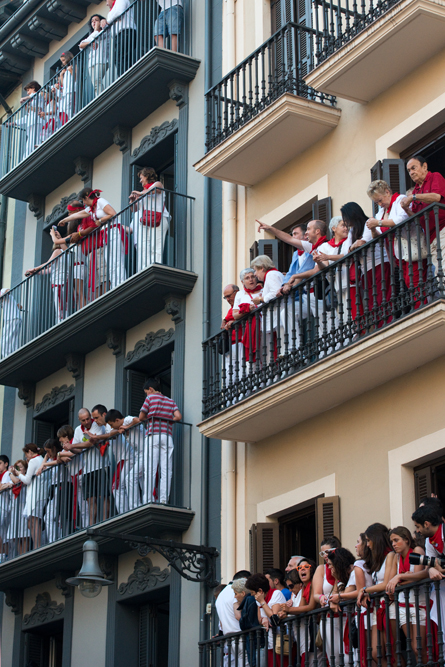

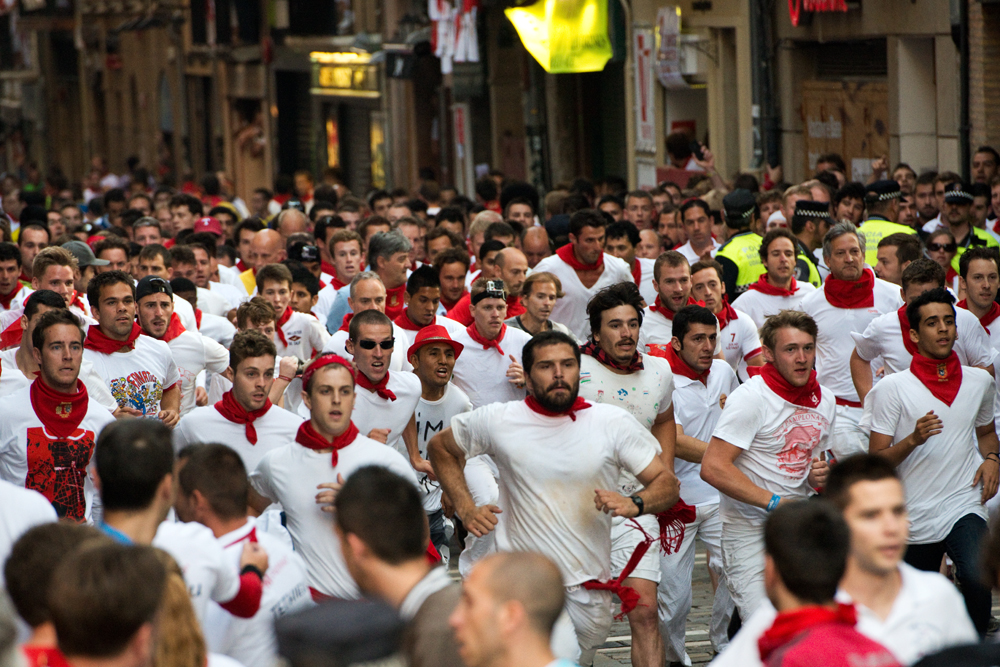
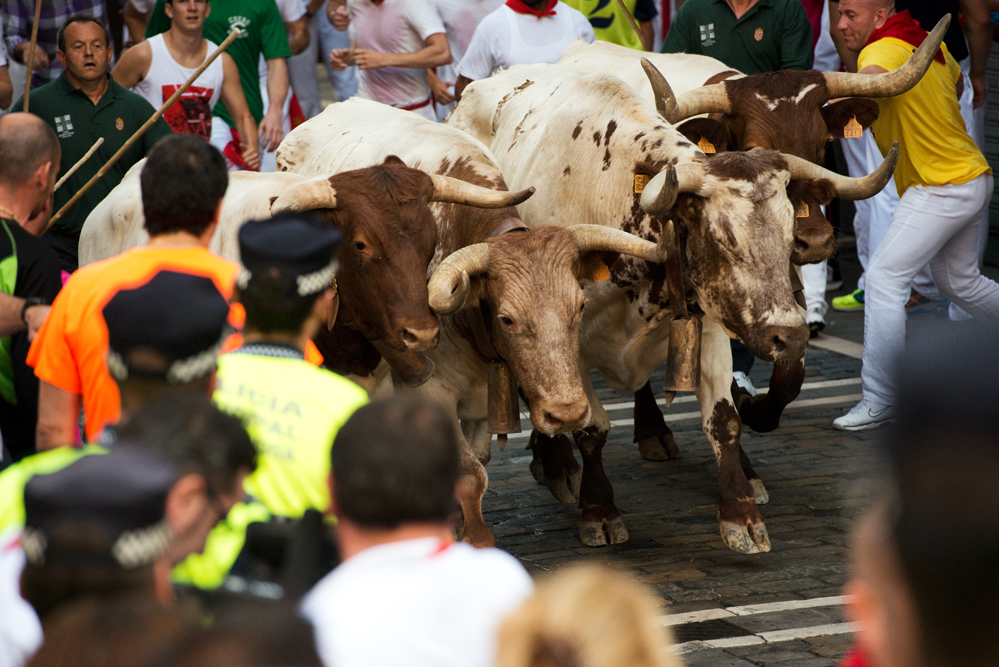
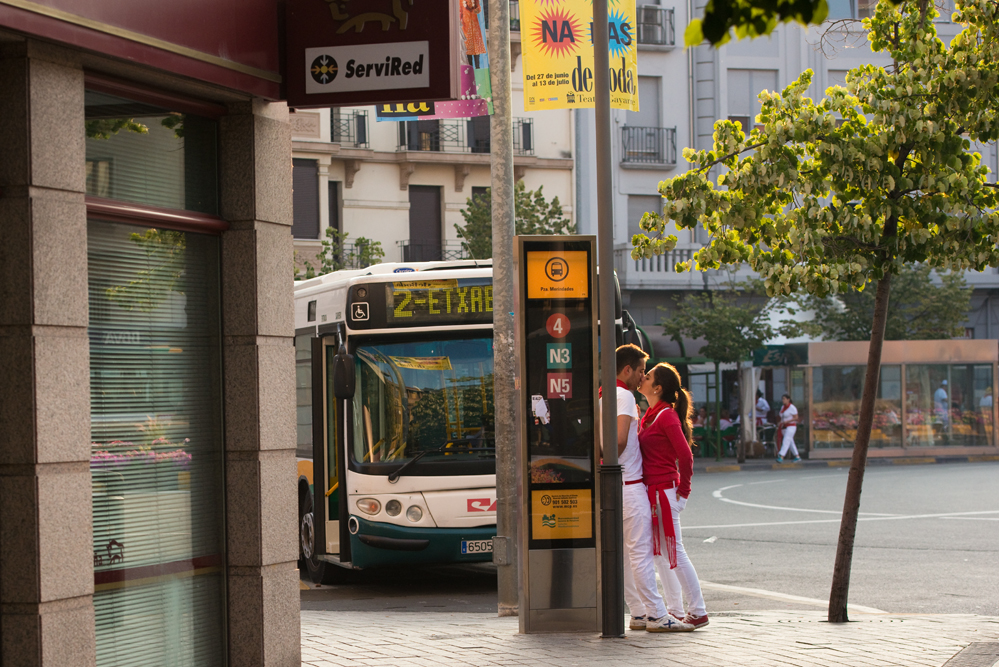
All the gorings happened the day I left. There was a 20 year old student from Utah who got a horn through the abdomen and had his spleen removed, a Spanish man who was pierced in the thighs and buttocks, and a 23 year old Australian woman whose chest was perforated and suffered broken ribs and a punctured lung. There's no way I can feel sorry for these people though, because they essentially have 'done it to themselves'. The bulls attack when people fall and try to get back up, or when a bull gets separated from his herd and panics.
Aside from the bull runs and bull fights, people celebrate throughout the streets of Pamplona, all in honor of the city's patron saint San Fermin.

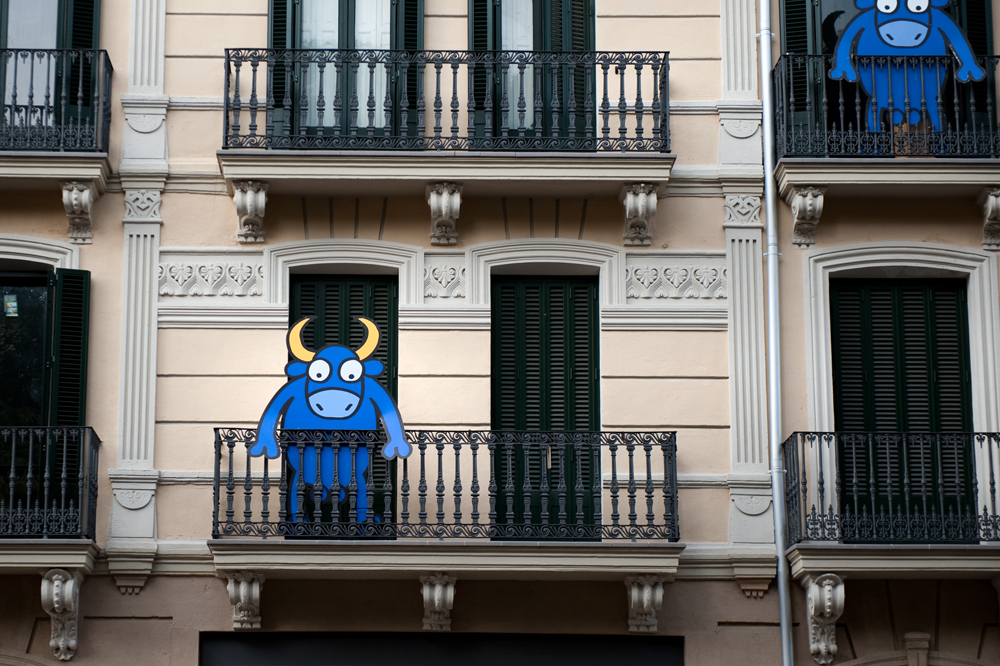

BULL FIGHT
Every evening at 6:30, there is a scheduled bull fight at the Plaza de Toros. The stadium (third largest in the world) is divided into two halves: sol or sombra, sun or shade. Shade is more expensive, understandably, and people serious about the sport of bullfighting sit here. The people who sit in the sun are slowly roasted for two and a half hours, but are too busy dancing to the peñas (social club brass bands) and pouring sangria on each other to watch the bullfight or care about the heat. I waited for 2 hours the following day to purchase my ticket from the official ticketing counters, getting there extra early before they opened to ensure that I'd get a favorable seat the following day. Scalpers lurk everywhere trying to sell off tickets that are more than likely counterfeit, and as a tourist there's no way of gauging authenticity. Ideally, I wanted a shade seat in the first tier of the stadium. After learning that the cost would be around 150 euros (close to 200 dollars), I opted for the middle seats, which drastically brought the price down to 40. When I got to the ring the next day, I found myself seated directly in front of a pillar. The people sitting next to me didn't seem to mind when I invaded their personal space to get around the pillar.


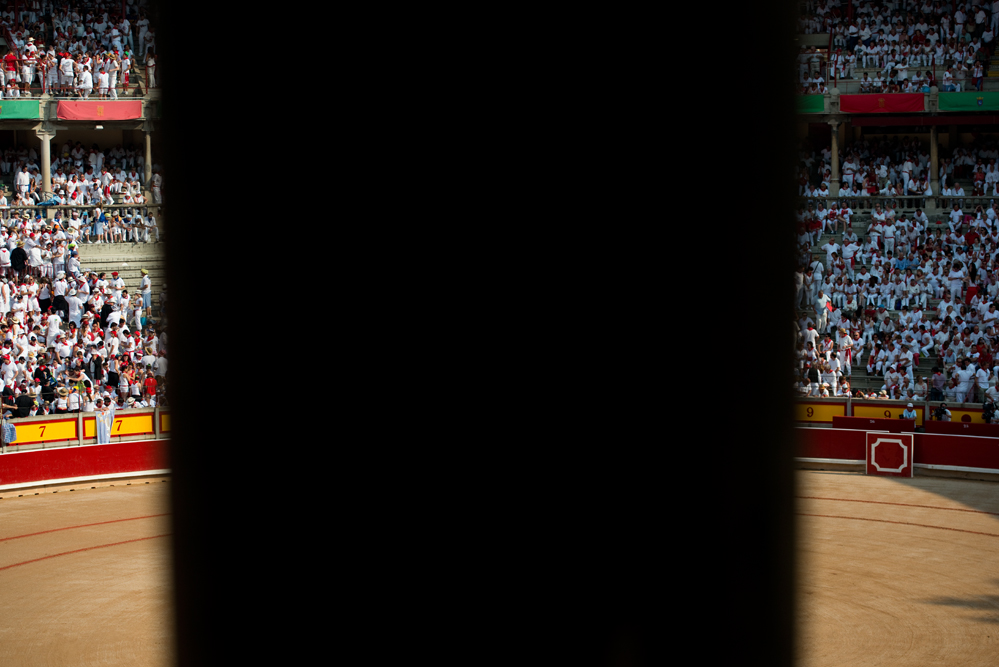
The event starts with a parade around the ring of everyone involved in the bullfight (the cuadrilla) as the peñas begin to play. The toreros remain in the arena as the bull is released. The four toreros work together, teasing and tiring the bull as it charges their fluttering magenta and canary yellow capes, catching the attention of the agitated bull. Usually only one of the toreros holds the title of matador, being the most experienced bullfighter of the group.
Two picadores arrive at the scene, dressed in attire just as intricate as the toreros on blindfolded and armored horses. They hold a spear with a short blade that is plunged into the bull's neck when it notices the horse and attempts to gore it. This is the first stage of the fight; Tercio de Varas. It is remarkable watching the horses as they are literally lifted into the air by the bull and remain impressively calm. The stab weakens the bull's charging force and also drives it into a wounded frenzy.
The picadors exit as the toreros continue to tire the animal, taking turns running at it with banderillas, decorated barbs, that they plunge into its back. This is part 2, Tercio de Banderillas. The bull is a sorry state at this point, with blood sometimes beginning to stream down its back. Its tongue lolls out, breathing frantically.
The matador exchanges his cape for a bright red one, the muleta, and is handed a sword. With controlled poise and ballerina-like grace, he performs the final act, Tercio de Muerte, with the exhausted beast. It is a dance of death both beautiful and saddening, a clash of visual splendor and brutality.
When the matador senses that the time is right, he drives the sword into its back, usually dropping the bull to its knees. He is given a shorter blade which he stabs into the neck, delivering instant death by severing its spine.
If the matador is truly skilled, the first sword plunge will successfully kill the animal. The crowd roars with approval if this is the case and the matador will triumphantly throw his hand up, showing his appreciation of the pleased crowd. The brass bands begin to play music again and onlookers cheer voraciously as three decorated horses are led out. The carcass is attached to the horses and they run out of the arena.
To watch this tremendous animal come bounding into the ring at the full height of its power to 20 minutes later being dragged away bloody and lifeless is quite something. To watch this six times in a row was a little overwhelming, I'll admit it. I knew I'd be a little uncomfortable watching a blood sport but when you're in Rome, do as the Romans do. I came, I saw, I documented. If I was going to experience San Fermin as a whole, the bull fight was just as important as any other element. I realize how significant bull fighting is to Spanish culture, but it's a shame that the animals have to endure such torment.
